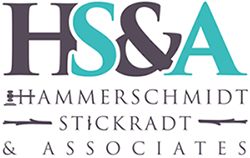Stop the Debt Cycle Through Chapter 7 Bankruptcy
If you’re wondering what are bankruptcy forms in Royal Oak, MI, our attorneys at Hammerschmidt Stickradt & Associates can assist you. We understand that dealing with debt can be mentally and physically draining, but it’s time to take action and regain control of your finances. By paying off debt and creating a sound strategy to restructure your finances, you can get your financial freedom today.
Our Royal Oak attorneys are delighted to help those in Walled Lake, Wyandotte, and the surrounding areas get the necessary bankruptcy forms and guide them through the entire process. We offer a free consultation to help you understand the bankruptcy process and determine whether it’s the right solution for your specific situation.
Don’t let debt hold you back any longer. Contact Hammerschmidt Stickradt & Associates today to schedule your free consultation and take the first step towards financial freedom.
What are Bankruptcy Forms?
Bankruptcy forms in Royal Oak, MI refer to the legal documents that individuals or businesses must complete and file with the bankruptcy court when they seek bankruptcy protection. These forms are required to initiate the bankruptcy process and provide the court with information about the debtor’s financial situation.
The specific bankruptcy forms required in Royal Oak, MI will depend on the type of bankruptcy the debtor is filing. For example, individuals filing for Chapter 7 bankruptcy will need to complete forms that disclose their income, expenses, assets, and debts, while those filing for Chapter 13 bankruptcy will need to provide a proposed repayment plan.
If you’re filing for bankruptcy in Royal Oak, MI, you will need to complete a series of official bankruptcy forms, which include:
- Voluntary Petition for Individuals Filing for Bankruptcy (Form 101): Form 101 is used to start the bankruptcy process and provides basic information about the debtor, such as their name, address, and social security number.
- Statement of Social Security Number (Form 121): Form 121 requires the debtor to verify their social security number.
- Schedule A/B: Property (Form 106A/B): Form 106A/B requires the debtor to list all their assets, including real estate, vehicles, bank accounts, and personal property, along with their estimated value.
- Schedule C: The Property You Claim as Exempt (Form 106C): Form 106C lists the debtor’s property that is exempt from the bankruptcy process under Michigan bankruptcy exemptions.
- Schedule D: Creditors Who Have Claims Secured by Property (Form 106D): Form 106D requires the debtor to list all their secured debts, such as a mortgage or car loan, along with the creditor’s name and address.
- Schedule E/F: Creditors Who Have Unsecured Claims (Form 106E/F): Form 106E/F requires the debtor to list all their unsecured debts, such as credit cards and medical bills, along with the creditor’s name and address.
- Schedule G: Executory Contracts and Unexpired Leases (Form 106G): Form 106G requires the debtor to list any contracts or leases they are currently bound by.
- Schedule H: Your Codebtors (Form 106H): Form 106H requires the debtor to list any codebtors who may be liable for the debt.
- Statement of Financial Affairs for Individuals Filing for Bankruptcy (Form 107): Form 107 requires the debtor to provide information about their financial histories, such as income, expenses, and previous bankruptcy filings.
- Summary of Schedules (Form 106Summary): Form 106Summary summarizes the information provided in all the debtor’s schedules.
- Declaration About an Individual Debtor’s Schedules (Form 106 Declaration): Form 106 Declaration confirms that the debtor has provided accurate and complete information on all their bankruptcy forms.
- Chapter 13 Plan (for those filing Chapter 13 bankruptcy): This form outlines the debtor’s proposed repayment plan for their debts.
- Means Test Calculation (Form 122A-2): Form 122A-2 is used to determine whether the debtor qualifies for Chapter 7 bankruptcy by comparing their income to the Michigan median income.
It’s important to keep in mind that these are only some of the most common bankruptcy forms required in Royal Oak, MI. The specific forms you need will depend on the type of bankruptcy you are filing and your individual financial situation. Seeking legal guidance from a bankruptcy attorney can help ensure that you complete the necessary forms accurately and successfully navigate the bankruptcy process.
Petition for Bankruptcy
You must fill out official bankruptcy documents with all of your financial details when you file for bankruptcy. The bankruptcy petition is the first of numerous pieces of paperwork that you must fill out (although the entire packet is often referred to as the “petition”). After you file the petition with the bankruptcy court clerk, your bankruptcy case officially begins.
Schedules A/B, C, D, E/F, and G
Bankruptcy schedules A/B, C, D, E/F, and G are used to provide detailed information about a debtor’s assets, liabilities, and obligations in a bankruptcy case.
- Schedule A/B combines the traditional schedules A and B, requiring the debtor to list all types of property they own, including real estate and other assets.
- Schedule C requires the debtor to list all property claimed as exempt and therefore not available to pay creditors.
- Schedule D mandates the inclusion of all secured creditors, who have a right to use the debtor’s assets to satisfy their claims.
- Schedule E/F lists priority claims and other general unsecured claims against the debtor. Priority claims are ranked in order of importance, and some creditors, such as those with domestic support responsibilities, wage claims, and certain tax claims, receive special treatment.
- Schedule G requires the debtor to list all executory contracts and unexpired leases. An executory contract is a legally enforceable contract in which both parties still owe each other substantial performance. Debtors must decide whether to accept or reject such contracts or leases, and a bankruptcy lawyer can help them understand the implications of each option.
Statement of Financial Affairs (SOFA)
The Statement of Financial Affairs (SOFA) is a legal document that is required as part of a bankruptcy filing. Its purpose is to provide a comprehensive historical overview of the debtor’s financial situation. The SOFA requires the debtor to disclose certain financial transactions and events that have occurred during specific time periods leading up to the bankruptcy petition.
The SOFA typically includes information on the debtor’s income, expenses, assets, liabilities, transfers of property, payments made to creditors, and any legal or administrative proceedings in which the debtor is involved. This information is organized into a series of questions that the debtor must answer under penalty of perjury.
The SOFA serves several purposes in the bankruptcy process. First, it provides a clear picture of the debtor’s financial situation to the court, creditors, and other interested parties. Second, it helps identify any potentially fraudulent or preferential transfers of property that may have occurred prior to the bankruptcy filing. Finally, it allows the trustee and creditors to assess the debtor’s financial situation and make informed decisions about how to proceed in the bankruptcy case.
Means Test Calculation
The means test is an eligibility requirement that determines whether a debtor can file for Chapter 7 bankruptcy, which discharges most debts or must file for Chapter 13 bankruptcy, which requires a repayment plan. The test calculates the debtor’s disposable income, which is the amount of money left after paying necessary living expenses, such as rent, utilities, food, and healthcare.
To calculate the means test, the debtor’s average gross income over the past six months is multiplied by 12 to determine their annual income. This figure is then compared to the median income for a household of the same size in the debtor’s state of residence. If the debtor’s income is below the median income, they are eligible to file for Chapter 7 bankruptcy. If their income is above the median income, the debtor must perform additional calculations to determine whether they have enough disposable income to pay back some of their debts through a Chapter 13 repayment plan.
The means test is a crucial step in the bankruptcy process that determines the debtor’s eligibility to file for Chapter 7 bankruptcy and may impact their bankruptcy strategy.
Chapter 13 Plan
A wage earner’s plan, also called Chapter 13 bankruptcy, enables individuals with a steady income to create a repayment strategy for some or all of their debts. The repayment plan involves paying creditors in installments over a period of three to five years, as per the chapter’s requirements. If the debtor’s current monthly income is less than the applicable state median, the plan will last for three years, unless the court grants an extension. If it is higher, the plan will typically be for five years, and it can never exceed that timeframe as per 11 U.S.C. § 1322(d). During the repayment period, creditors are not allowed to start or continue collection activities, and any attempts to do so may result in penalties.
This chapter covers six parts of a Chapter 13 proceeding: the benefits of using Chapter 13, the prerequisites for using Chapter 13, how the plan is implemented, and the special Chapter 13 discharge.
The debtor must gather the following data before filling out the official bankruptcy forms, which include the petition, statement of financial affairs, and schedules:
- A list of all creditors, together with the sums and details of each claim.
- The debtor’s earnings, including their source, volume, and frequency.
- A list of every item owned by the debtor.
- A thorough breakdown of the debtor’s monthly living costs, including food, clothing, housing, utilities, taxes, transportation, medical care, etc.
Regardless of whether they are filing a joint petition, separate individual petition, or even if only one spouse is filing, married people must acquire this information for their spouse. When only one spouse files, the court, the trustee, and creditors must know the income and expenses of the non-filing spouse in order to assess the household’s financial state.
Call our Royal Oak Attorneys Now!
Are you overwhelmed by debt and struggling to make ends meet? Take control of your finances today with the help of our Royal Oak bankruptcy attorneys at Hammerschmidt Stickradt and Associates, P.C. Law. Whether you need assistance with Chapter 7 or Chapter 13 bankruptcy, we can provide you with guidance and answer your questions, including “What are bankruptcy forms in Royal Oak, MI?” to make the process as smooth as possible.
We understand that dealing with creditors and debt can be overwhelming, which is why we offer personalized attention to your case and help you determine the best course of legal action. From the Bankruptcy Means Test and Automatic Stay in Bankruptcy to dealing with abusive creditors, we will guide you through every step of the process.
Don’t let credit card debt, student loan debt, or the threat of foreclosure hold you back any longer. To help you get a fresh start, we also offer a free program for restoring your credit.
Take the first step towards financial freedom and arrange your free legal consultation today. Call us now and discover why so many individuals and families throughout Royal Oak, MI trust us to help them achieve a brighter financial future. Contact us now and let us help you get back on track.

